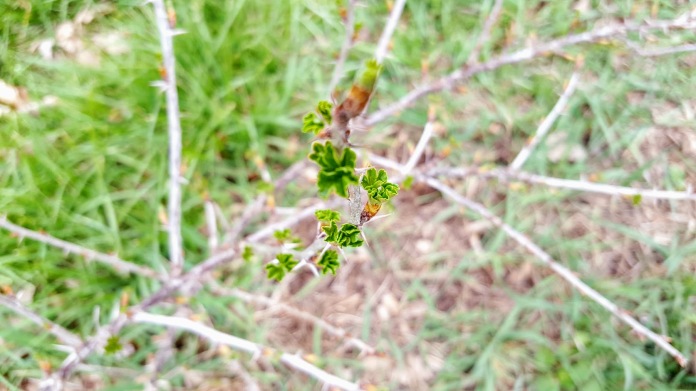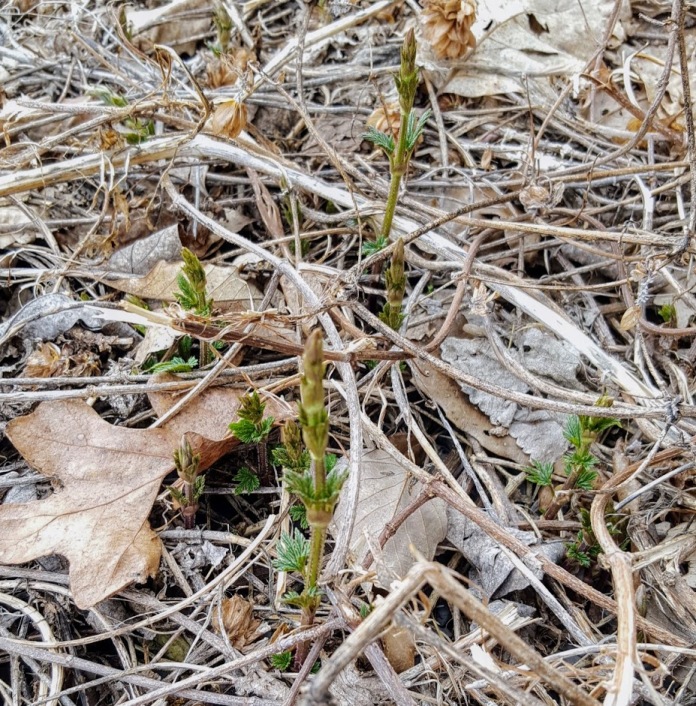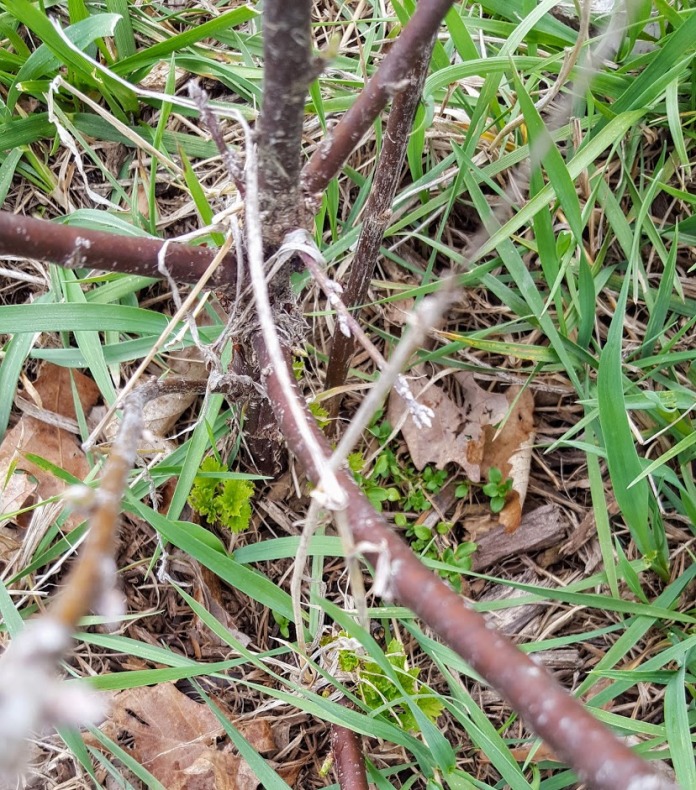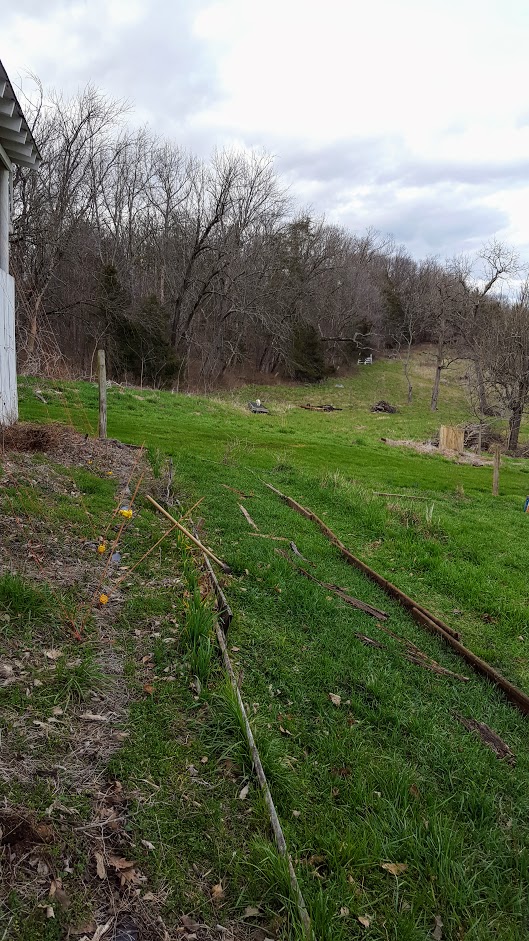All of my non-herbaceous perennials dropped their leaves during a poorly timed dry spell last summer. Of course the first weekend that I could get out there, the rain clouds opened up while I was en route. Last year was a terribly executed attempt at absentee gardening.
At least the goosberries survived fully which may have something to do with their location receiving the most shade:
One of the raspberries survived as well. Nothing from the blackberries so far.
The hops are sprouting out of the soil like the most vigorous asparagus I have ever seen. I’ve read the tender shoots can be harvested and prepared exactly like asparagus:
Asparagus itself shows no sign of life.
The currants clung to life:
The current currant situation is a great opportunity to nerd out in plant biology in the next post.
Mulberries, filberts, blackberries and grapes are all lifeless currently. The blueberries are in the same state. A thick mat of an unknown, lush sedge (maybe a grass?) that I could not find them until after multiple winter weeding sessions. I believe that lush, unknown sedge has me eating the words published in this exuberant post.
To end on a positive note- Constant winter skirmishes in the war to regain territory lost to the occupant weeds in the previous year of neglect has made the garden beds visible at last:



